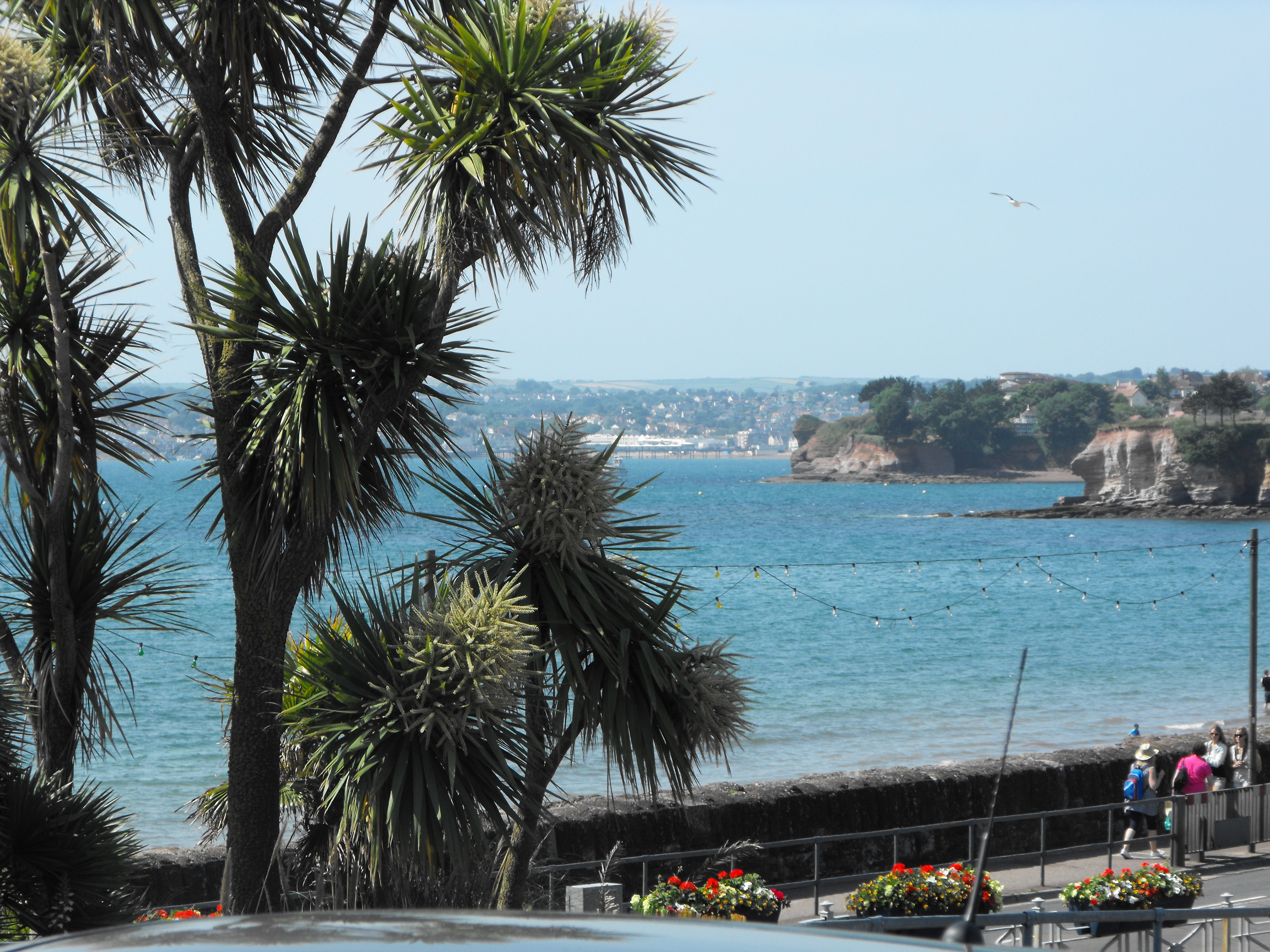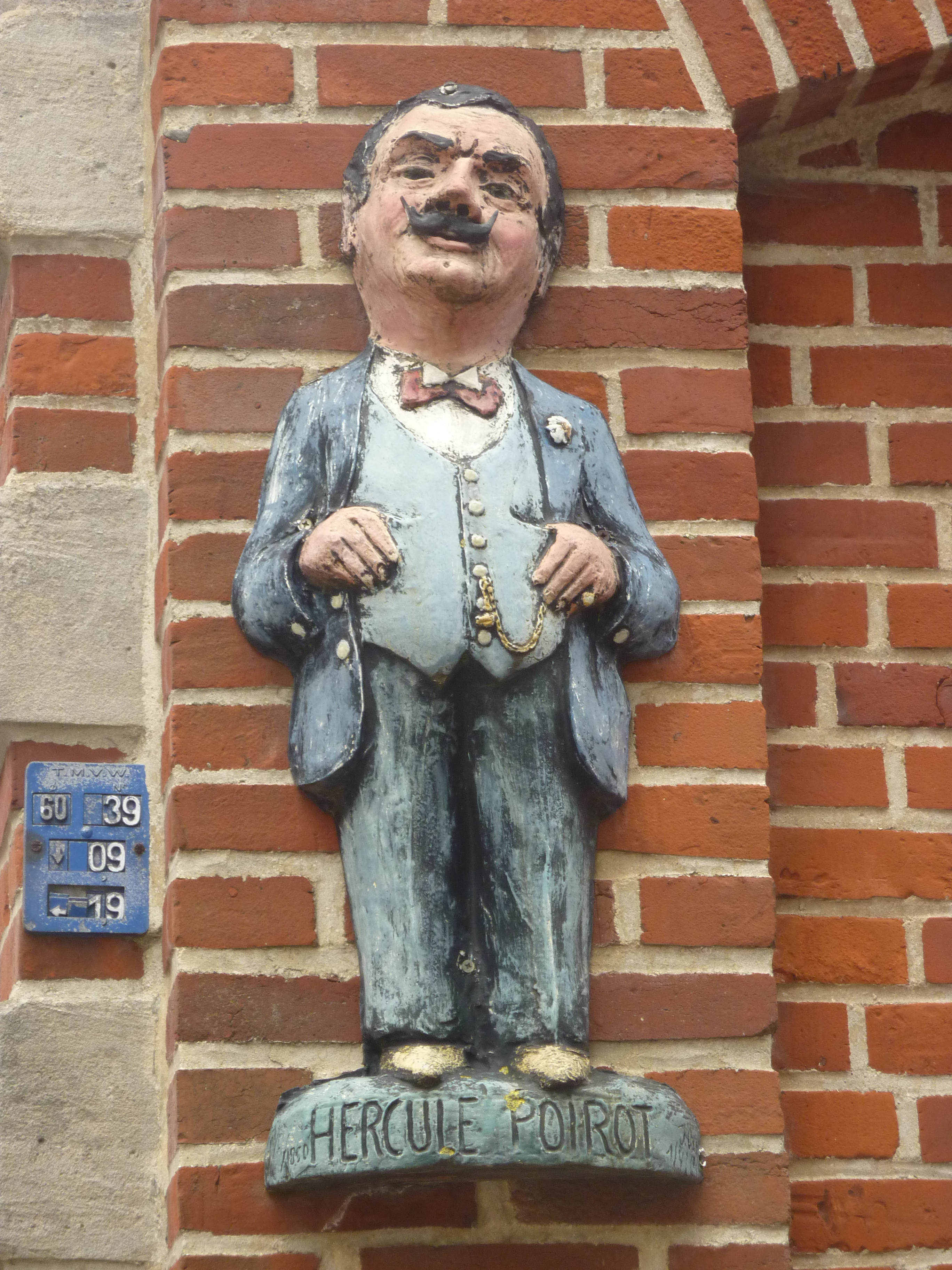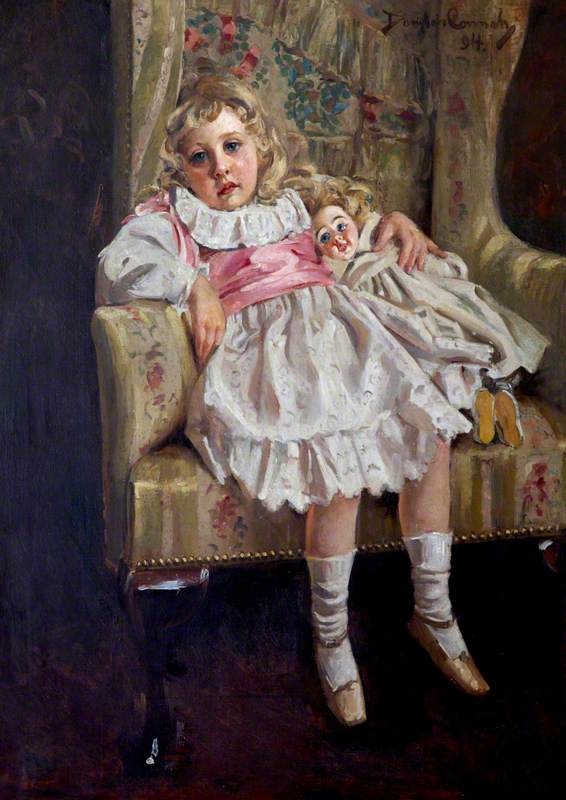|
Churston Ferrers
Churston Ferrers is an area and former civil parish, in the borough of Torbay, Devon, England, situated between the south coast towns of Paignton and Brixham. Today it is administered by local government as the Churston-with-Galmpton ward of the Torbay unitary authority. It contains the coastal village of ''Churston'', the now larger village of Galmpton and the Broadsands area. The place-name 'Churston Ferrers' is first attested in the Domesday Book of 1086, where it appears as ''Cercetone'', meaning 'church town or settlement'. The manor was held by Hugh de Fereris in 1303, according to ''Feudal Aids'' records, giving the second part of the name. Churston residents tend to associate mostly with Brixham, though those in the northern part of the Churston-with-Galmpton ward often think of themselves as part of Paignton. Churston railway station is on the Paignton and Dartmouth Steam Railway from which steam trains run daily. It is served by the frequent "Hop 12" service between ... [...More Info...] [...Related Items...] OR: [Wikipedia] [Google] [Baidu] |
Torbay
Torbay is a borough and unitary authority in Devon, south west England. It is governed by Torbay Council and consists of of land, including the resort towns of Torquay, Paignton and Brixham, located on east-facing Tor Bay, part of Lyme Bay on the English Channel. A popular tourist destination, Torbay's sandy beaches, mild climate and recreational and leisure attractions have given rise to its nickname of the "English Riviera". History Human bones and tools found in Kents Cavern in Torquay show that people have inhabited the Torbay area since Paleolithic times. A maxilla fragment known as Kents Cavern 4 may be the oldest example of a modern human in Europe, dating back to 37,000–40,000 years ago. Roman soldiers are known to have visited Torquay during the period when Britannia formed a part of the Roman Empire; they left offerings at a curious rock formation in Kent's Cavern, known as "The Face". A Roman burial was discovered in 1993 in Paignton. Both Brixham ... [...More Info...] [...Related Items...] OR: [Wikipedia] [Google] [Baidu] |
Welsh People
The Welsh ( cy, Cymry) are an ethnic group native to Wales. "Welsh people" applies to those who were born in Wales ( cy, Cymru) and to those who have Welsh ancestry, perceiving themselves or being perceived as sharing a cultural heritage and shared ancestral origins. Wales is the third-largest Countries of the United Kingdom, country of the United Kingdom of Great Britain and Northern Ireland. In the Acts of Union 1707, the Kingdom of England and the Kingdom of Scotland merged to become the Kingdom of Great Britain. The majority of people living in Wales are British nationality law, British citizens. In Wales, the Welsh language ( cy, Cymraeg) is protected by law. Welsh remains the predominant language in many parts of Wales, particularly in North Wales and parts of West Wales, though English is the predominant language in South Wales. The Welsh language is also taught in schools throughout Wales, and, even in regions of Wales in which Welsh people predominantly speak English ... [...More Info...] [...Related Items...] OR: [Wikipedia] [Google] [Baidu] |
Villages In Devon
A village is a clustered human settlement or community, larger than a hamlet but smaller than a town (although the word is often used to describe both hamlets and smaller towns), with a population typically ranging from a few hundred to a few thousand. Though villages are often located in rural areas, the term urban village is also applied to certain urban neighborhoods. Villages are normally permanent, with fixed dwellings; however, transient villages can occur. Further, the dwellings of a village are fairly close to one another, not scattered broadly over the landscape, as a dispersed settlement. In the past, villages were a usual form of community for societies that practice subsistence agriculture, and also for some non-agricultural societies. In Great Britain, a hamlet earned the right to be called a village when it built a church. [...More Info...] [...Related Items...] OR: [Wikipedia] [Google] [Baidu] |
The A
''The'' () is a grammatical article in English, denoting persons or things already mentioned, under discussion, implied or otherwise presumed familiar to listeners, readers, or speakers. It is the definite article in English. ''The'' is the most frequently used word in the English language; studies and analyses of texts have found it to account for seven percent of all printed English-language words. It is derived from gendered articles in Old English which combined in Middle English and now has a single form used with pronouns of any gender. The word can be used with both singular and plural nouns, and with a noun that starts with any letter. This is different from many other languages, which have different forms of the definite article for different genders or numbers. Pronunciation In most dialects, "the" is pronounced as (with the voiced dental fricative followed by a schwa) when followed by a consonant sound, and as (homophone of pronoun ''thee'') when followed by a ... [...More Info...] [...Related Items...] OR: [Wikipedia] [Google] [Baidu] |
Hercule Poirot
Hercule Poirot (, ) is a fictional Belgian detective created by British writer Agatha Christie. Poirot is one of Christie's most famous and long-running characters, appearing in 33 novels, two plays ('' Black Coffee'' and ''Alibi''), and more than 50 short stories published between 1920 and 1975. Poirot has been portrayed on radio, in film and on television by various actors, including Austin Trevor, John Moffatt, Albert Finney, Peter Ustinov, Ian Holm, Tony Randall, Alfred Molina, Orson Welles, David Suchet, Kenneth Branagh, and John Malkovich. Overview Influences Poirot's name was derived from two other fictional detectives of the time: Marie Belloc Lowndes' Hercule Popeau and Frank Howel Evans' Monsieur Poiret, a retired French police officer living in London. Evans' Jules Poiret "was small and rather heavyset, hardly more than five feet, but moved with his head held high. The most remarkable features of his head were the stiff military moustache. His apparel was ... [...More Info...] [...Related Items...] OR: [Wikipedia] [Google] [Baidu] |
Agatha Christie
Dame Agatha Mary Clarissa Christie, Lady Mallowan, (; 15 September 1890 – 12 January 1976) was an English writer known for her 66 detective novels and 14 short story collections, particularly those revolving around fictional detectives Hercule Poirot and Miss Marple. She also wrote the world's longest-running play, the murder mystery ''The Mousetrap'', which has been performed in the West End since 1952. A writer during the "Golden Age of Detective Fiction", Christie has been called the "Queen of Crime". She also wrote six novels under the pseudonym Mary Westmacott. In 1971, she was made a Dame (DBE) by Queen Elizabeth II for her contributions to literature. ''Guinness World Records'' lists Christie as the best-selling fiction writer of all time, her novels having sold more than two billion copies. Christie was born into a wealthy upper middle class family in Torquay, Devon, and was largely home-schooled. She was initially an unsuccessful writer with six co ... [...More Info...] [...Related Items...] OR: [Wikipedia] [Google] [Baidu] |
Baron Churston
Baron Churston, of Churston Ferrers and Lupton in the County of Devon, is a title in the Peerage of the United Kingdom. It was created in 1858 for the former Conservative Member of Parliament, Sir John Yarde, 3rd Baronet. He had earlier represented South Devon in the House of Commons. Two years later, in 1860, he assumed by Royal licence the additional surname of Buller. the titles are held by his great-great-great-grandson, the fifth Baron, who succeeded his father in 1991. The Baronetcy, of Lupton House in the County of Devon, was created in the Baronetage of Great Britain on 13 January 1790 for the lawyer Sir Francis Buller. He was the son of James Buller. The first Baronet's son, the second Baronet, represented Totnes in the House of Commons. In 1800, he assumed by Royal licence the surname of Yarde. He was succeeded by his eldest son, the aforementioned third Baronet, who was elevated to the peerage in 1858. The Barons Churston are related to the Viscounts Dilhorne ... [...More Info...] [...Related Items...] OR: [Wikipedia] [Google] [Baidu] |
Country House
An English country house is a large house or mansion in the English countryside. Such houses were often owned by individuals who also owned a town house. This allowed them to spend time in the country and in the city—hence, for these people, the term distinguished between town and country. However, the term also encompasses houses that were, and often still are, the full-time residence for the landed gentry who ruled rural Britain until the Reform Act 1832. Frequently, the formal business of the counties was transacted in these country houses, having functional antecedents in manor houses. With large numbers of indoor and outdoor staff, country houses were important as places of employment for many rural communities. In turn, until the agricultural depressions of the 1870s, the estates, of which country houses were the hub, provided their owners with incomes. However, the late 19th and early 20th centuries were the swansong of the traditional English country house lifest ... [...More Info...] [...Related Items...] OR: [Wikipedia] [Google] [Baidu] |
Palladian
Palladian architecture is a European architectural style derived from the work of the Venetian architect Andrea Palladio (1508–1580). What is today recognised as Palladian architecture evolved from his concepts of symmetry, perspective and the principles of formal classical architecture from ancient Greek and Roman traditions. In the 17th and 18th centuries, Palladio's interpretation of this classical architecture developed into the style known as Palladianism. Palladianism emerged in England in the early 17th century, led by Inigo Jones, whose Queen's House at Greenwich has been described as the first English Palladian building. Its development faltered at the onset of the English Civil War. After the Stuart Restoration, the architectural landscape was dominated by the more flamboyant English Baroque. Palladianism returned to fashion after a reaction against the Baroque in the early 18th century, fuelled by the publication of a number of architectural books, including Pal ... [...More Info...] [...Related Items...] OR: [Wikipedia] [Google] [Baidu] |
Lupton, Churston Ferrers
Lupton is an historic manor in the parish of Brixham, Devon. The surviving manor house known as Lupton House, is a Palladian Country house built by Charles II Hayne (1747–1821),Pevsner, Nikolaus & Cherry, Bridget, ''The Buildings of England: Devon, London'', 2004, pp. 829, 833 Sheriff of Devon in 1772 and Colonel of the North Devon Militia. It received a Grade II* listing in 1949. The park and gardens are Grade II* listed in the National Register of Historic Parks and Gardens. At some time before 1792 it was sold by Charles II Hayne, who had only lived in his new house for about twenty years, to the judge Sir Francis Buller, 1st Baronet (1746–1800), of nearby Churston Court, which he let to a tenant. Judge Buller had another residence, on bleak Dartmoor, known as Prince Hall, where he was a pioneer of moorland reclamation. In about 1840 the house was remodelled in the neo-classical style by his grandson, Sir John Yarde-Buller, 3rd Baronet (1799–1871; cre ... [...More Info...] [...Related Items...] OR: [Wikipedia] [Google] [Baidu] |
Grade II* Listed Building
In the United Kingdom, a listed building or listed structure is one that has been placed on one of the four statutory lists maintained by Historic England in England, Historic Environment Scotland in Scotland, in Wales, and the Northern Ireland Environment Agency in Northern Ireland. The term has also been used in the Republic of Ireland, where buildings are protected under the Planning and Development Act 2000. The statutory term in Ireland is " protected structure". A listed building may not be demolished, extended, or altered without special permission from the local planning authority, which typically consults the relevant central government agency, particularly for significant alterations to the more notable listed buildings. In England and Wales, a national amenity society must be notified of any work to a listed building which involves any element of demolition. Exemption from secular listed building control is provided for some buildings in current use for worship, ... [...More Info...] [...Related Items...] OR: [Wikipedia] [Google] [Baidu] |
Manor House
A manor house was historically the main residence of the lord of the manor. The house formed the administrative centre of a manor in the European feudal system; within its great hall were held the lord's manorial courts, communal meals with manorial tenants and great banquets. The term is today loosely applied to various country houses, frequently dating from the Late Middle Ages, which formerly housed the landed gentry. Manor houses were sometimes fortified, albeit not as fortified as castles, and were intended more for show than for defencibility. They existed in most European countries where feudalism was present. Function The lord of the manor may have held several properties within a county or, for example in the case of a feudal baron, spread across a kingdom, which he occupied only on occasional visits. Even so, the business of the manor was directed and controlled by regular manorial courts, which appointed manorial officials such as the bailiff, granted ... [...More Info...] [...Related Items...] OR: [Wikipedia] [Google] [Baidu] |



.png)


.jpg)


